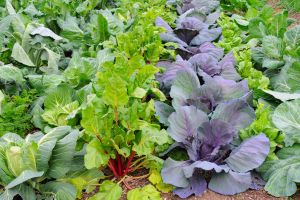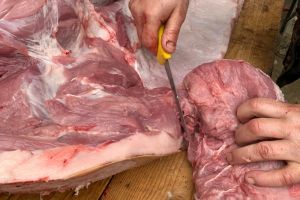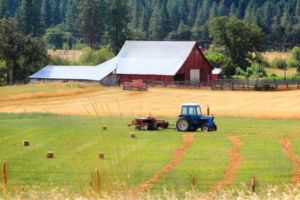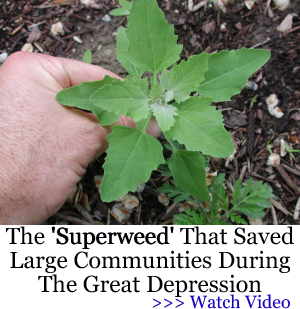![]()
The Great Depression was arguably the hardest economic since the Dark Ages. The things people had to do to survive that era serve as a reference point for modern-day preppers and survivalists. The Greatest Generation that survived those desperate times left behind a legacy of lessons we continue to learn from today.
Most preppers are well-versed in Depression-era families who kept a big garden, raised chickens, and created recipes that maximized every calorie they could get their hands on. Yet there are some lesser-known things they did during the Great Depression that might surprise you.
They Organized Seed Exchange Libraries
During the Great Depression, my grandmother and many Midwestern suburban housewives shared seeds from each other’s gardens. To be a member you brought in a big bounty of seeds you harvested from your own garden.
You could then “Check Out” 8 to 10 small envelopes of other seeds the next spring. My Grandmother coordinated all the families in the neighborhood. One would be responsible for providing the winter squash seeds, another had tomato seeds, and the lady around the corner brought in her zucchini seeds.
 It was a strategy that was humming like a well-oiled machine by the time World War Two happened and people started keeping Victory Gardens.
It was a strategy that was humming like a well-oiled machine by the time World War Two happened and people started keeping Victory Gardens.
For those who are serious about growing a survival garden that will get you through tough times, I strongly recommend The Self-Sufficient Backyard.
This resource offers invaluable insights and practical advice on transforming your backyard into a self-sustaining homestead. It teaches you how to create a year-round self-sustaining garden and begin living independently.
Wildlife Was Fair Game
My father used to talk about how you rarely saw wild animals during the Great Depression because everyone was eating them. We’re not talking about hunting season, where men wait in the forest with a high-powered rifle ready to take down a deer with absolute precision.
We’re talking about guys popping out of the reeds to club a blue heron. People trapped every squirrel in the neighborhood, and clutches of duck eggs were fried for Sunday brunch in the spring.
When you couldn’t afford the cost of meat in the stores, any source of protein you could get your hands on was fair game. This also meant paying attention to the habitat and activity of non-traditional game animals in the wild, at the park, and in your own neighborhood. Because if you didn’t eat them, you knew for sure someone else would!
Organized Neighborhood Meat Lockers
During the Great Depression, if you harvested an animal, you used every part of it or gave what you couldn’t use to someone else. It was also an era where most people went to church where they absorbed sermons about things like the Golden Rule and the importance of being your brother’s keeper.
 This inspired some neighborhoods and local parishes to sponsor a community meat locker.
This inspired some neighborhoods and local parishes to sponsor a community meat locker.
People would donate meat from chickens or pigs that they harvested, and the leftover bits would be contributed to the meat locker for anyone who needed them.
You can learn here the simplest method for butchering and preserving pigs, poultry or any other livestock for a whole year without refrigeration, just as my grandparents used to do.
Sometimes groups of families would pool their money together to buy a lard hog or a fattened turkey. Then they would divide it based on how many shares of the meat each family invested in.
Some historians speculate that this was how meat raffles or meat draws started. Only to become more popular during the rationing years of World War Two.
Families Invented Haunted Houses
In the early days of the Great Depression, many people lost their homes or abandoned them to seek work elsewhere. Children would explore these vacant houses, getting injured and sometimes starting fires.
To discourage them many communities started hosting haunted houses. The scary props, costume ghosts, and fake monsters popping out to scare kids created a mystique that abandoned houses were scary and dangerous.
Created Extended Family Communities
Farms and estates that were owned free-and-clear were often insulated from bank foreclosures that were so common in the early days of the Great Depression.
Related: Are you a Community Member or a Lone Wolf Survivalist?

Many adult children returned to the original family farm.
They would turn a disused calf barn or a chicken coop into a makeshift dwelling.
Then they would work on the family farm or take up other enterprises like bootlegging.
Used Distilled Heads for Medicinal Purposes
Even after prohibition was repealed many people continued to distill their own spirits. The so-called “Heads” that first came out of the distillation process often had high levels of low-quality, low boiling point alcohol compounds aldehydes and ethyl acetate.
While they weren’t safe to drink, they could be used as antiseptics. Some bootleggers would even sell these antiseptics to local families or offer them to doctors on a house call to reduce their bill.
Made Clothing from Flour & Potato Sacks
During the Great Depression, dry goods like potatoes and flour were often sold in large fabric bags. It didn’t take mothers long to figure out ways to create simple outfits and dresses for their kids.
To their credit, flour companies recognized the trend and started selling flour in fabric bags with decorative patterns. This allowed little girls to have the pretty dresses they dreamed of while stretching the family budget even further.
A lot of modern-day preppers draw inspiration from the Great Depression for proven survival methods that worked during the hardest of times. We’re all well aware of the value of keeping chickens, pigs, and other animals. The importance of growing a garden from heirloom seeds that can be kept every year. There are certainly enough Depression-era recipes out there to make a cookbook.
Yet we also can’t lose sight of the social ingenuity that occurred during the Depression. Neighborhoods coming together to share seeds, and pool resources to afford meat. Dance competitions where you could eat standing up, with a chance to win some of the proceeds. Even communities creating haunted houses to teach kids about the dangers of exploring abandoned buildings all speak to an important community element of survival.
We need to consider that homo sapiens didn’t rise to the top of the food chain thanks to our big, beautiful brains. Our abilities as a social species were an important element in every survival of the fittest step we took along the way. The community strategies of the Great Depression highlight the value of social engineering as part of a comprehensive survival strategy.
You may also like:
 The Seedbank You Need to Build Before the Upcoming Food Shortage
The Seedbank You Need to Build Before the Upcoming Food Shortage
What to Do With All Your Frozen Food Once the Power Goes Out (Video)
Best States for Self-Defense. Do You Live in One of Them?
8 EMP-Themed Movies You Should Watch
How to Preserve Your Food With Wood Ash



